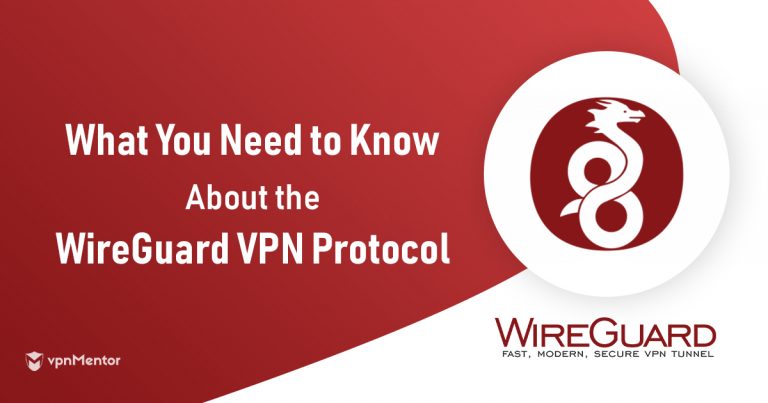Featured
Table of Contents
Wireguard Vs Openvpn
It is currently under heavy development, but currently it may be considered the most protected, most convenient to utilize, and most basic VPN service in the industry. Wire, Guard aims to be as easy to set up and deploy as SSH. A VPN connection is made simply by exchanging really easy public secrets precisely like exchanging SSH secrets and all the rest is transparently managed by Wire, Guard.
Wire, Guard presents an extremely basic yet effective user interface. Wire, Guard has actually been developed with ease-of-implementation and simplicity in mind.
, which goes into more detail on the procedure, cryptography, and basics.

This user interface serves as a tunnel interface. Wire, Guard associates tunnel IP addresses with public keys and remote endpoints. When the interface sends a packet to a peer, it does the following: This package is meant for 192. 168.30. 8. Which peer is that? Let me look ... Okay, it's for peer ABCDEFGH.
An Introductory Guide On Wireguard Vpn - Techgenix
If not, drop it. Behind the scenes there is much taking place to offer correct personal privacy, authenticity, and best forward secrecy, utilizing modern cryptography. At the heart of Wire, Guard is a principle called Cryptokey Routing, which works by associating public secrets with a list of tunnel IP addresses that are allowed inside the tunnel (what is wireguard protocol and how does it work?).

Each peer has a public key. Public keys are short and easy, and are used by peers to confirm each other. They can be circulated for use in setup files by any out-of-band technique, similar to how one might send their SSH public secret to a buddy for access to a shell server.
69:51820 Allowed, IPs = 0. 0.0. 0/0 In the server setup, each peer (a customer) will have the ability to send packages to the network interface with a source IP matching his corresponding list of allowed IPs. When a packet is received by the server from peer g, N65Bk, IK ..., after being decrypted and validated, if its source IP is 10.
230, then it's permitted onto the interface; otherwise it's dropped. In the server setup, when the network user interface wishes to send out a package to a peer (a customer), it looks at that package's destination IP and compares it to each peer's list of permitted IPs to see which peer to send it to - what is wireguard protocol and how does it work?.
Openvpn Vs Wireguard - What's The Difference ? (Pros ...

10.10. 230, it will secure it using the general public secret of peer g, N65Bk, IK ..., and then send it to that peer's most current Web endpoint. In the client setup, its single peer (the server) will be able to send packages to the network interface with any source IP (considering that 0.
0/0 is a wildcard). When a package is received from peer HIgo9x, Nz ..., if it decrypts and verifies correctly, with any source IP, then it's allowed onto the user interface; otherwise it's dropped. In the customer configuration, when the network user interface desires to send out a packet to its single peer (the server), it will encrypt packages for the single peer with any destination IP address (because 0.
0/0 is a wildcard). If the network user interface is asked to send a packet with any location IP, it will secure it using the public secret of the single peer HIgo9x, Nz ..., and then send it to the single peer's most recent Internet endpoint. Simply put, when sending packages, the list of enabled IPs behaves as a sort of routing table, and when getting packages, the list of permitted IPs behaves as a sort of gain access to control list.
Any combination of IPv4 and IPv6 can be utilized, for any of the fields. Wire, Guard is fully capable of encapsulating one inside the other if necessary. Since all packages sent out on the Wire, Guard interface are secured and validated, and due to the fact that there is such a tight coupling in between the identity of a peer and the allowed IP address of a peer, system administrators do not require complex firewall program extensions, such as in the case of IPsec, however rather they can simply match on "is it from this IP? on this interface?", and be assured that it is a safe and authentic package.
Wireguard Basics

The customer configuration includes a preliminary endpoint of its single peer (the server), so that it knows where to send out encrypted information prior to it has actually gotten encrypted information. The server configuration does not have any preliminary endpoints of its peers (the clients). This is because the server finds the endpoint of its peers by analyzing from where properly authenticated data stems.
We also talk about development tasks there and plan the future of the task.

Do not send non-security-related problems to this email alias. Do not send security-related concerns to different email addresses.
Wire, Guard is much faster than Open, VPN. It consumes 15% less information, deals with network modifications much better, and appears to be safe and secure. Open, VPN has actually been tried and evaluated, is more privacy-friendly, and is supported by a bigger number of VPNs.
Wireguard Vpn Explained
We might get compensation from the products and services pointed out in this story, however the viewpoints are the author's own. We have not consisted of all offered items or deals. (VPNs) have actually taken off, gaining popularity with those looking for extra security, personal privacy, and flexibility.
In this short article Wire, Guard is a brand-new, open-source VPN procedure developed with state-of-the-art cryptography, which is the practice of coding delicate details so just the designated recipients can interpret its meaning. Designer Jason A.
Working with Wire, Guard couldn't be easier. Wire, Guard keeps it easy by operating with fewer than 4,000 lines of code compared to older VPN protocols that typically use thousands more.
Latest Posts
Best Vpn For Business
9 Best Corporate & Small Business Vpn Solutions
Vpn By Google One - Extra Online Security For Your Phone